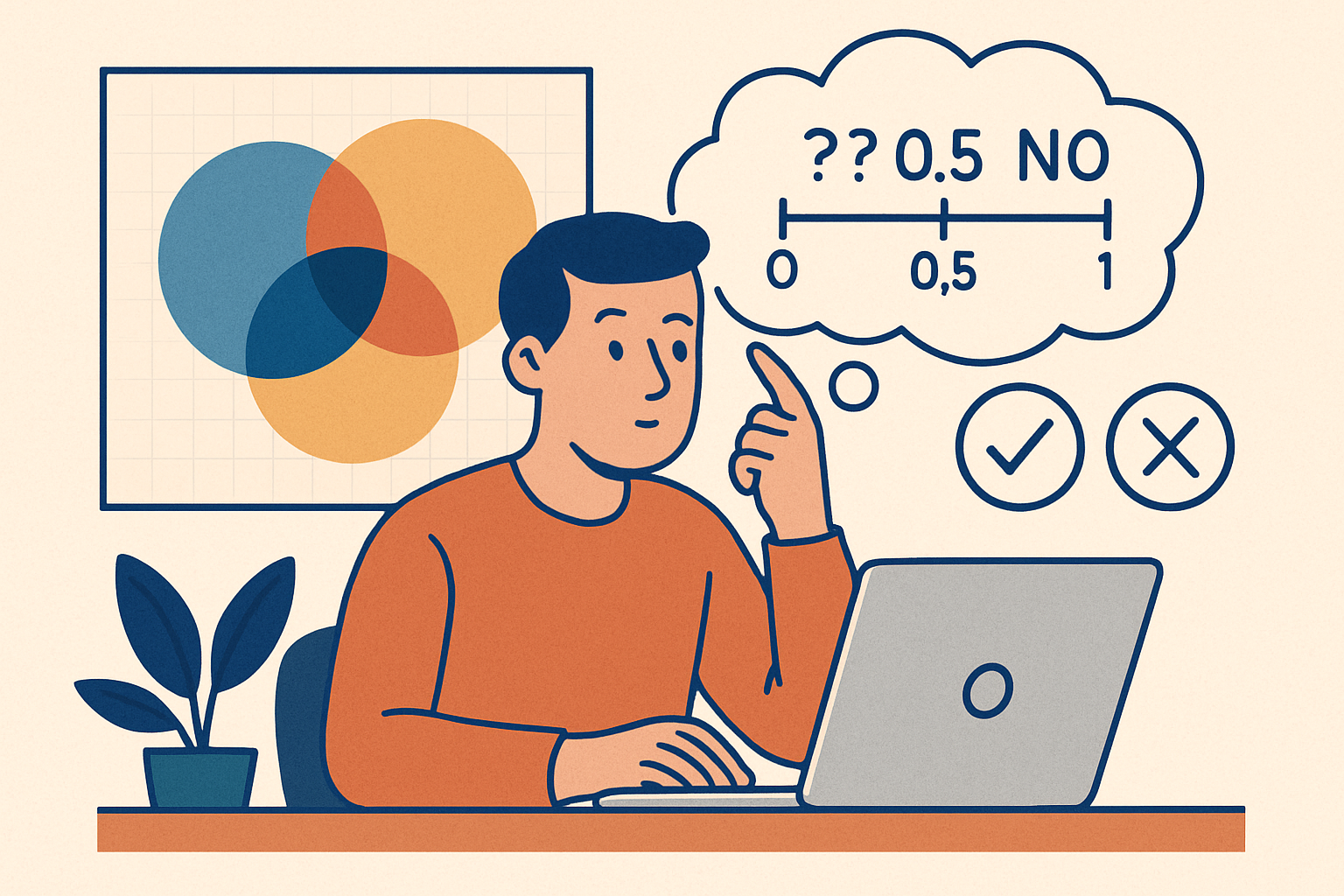
Ever notice how most choices aren’t yes or no? You’re not just “tired” or “awake,” your shower isn’t only “hot” or “cold.” Real life lives in the in-between. Flores-Parra and colleagues present a simple way to model fuzziness, allowing non-experts to build smarter simulations in NetLogo, a free tool that many students already use. Their idea is to plug in fuzzy logic—rules that accept shades of meaning—so digital “agents” make choices more like people do.
Here’s the core idea in plain terms. A fuzzy inference system is a set of everyday IF-THEN rules that turn inputs into decisions. Think: IF the room is “a bit warm” AND my budget is “low,” THEN set the fan to “medium.” In their toolkit, you name your inputs and outputs, define what words like “low,” “medium,” and “high” mean (those are membership functions), write a few rules, and then test the results on real numbers to see the decision the system makes. There are two flavors: Type-1 (great when things are fairly clear) and Type-2 (better when there’s extra uncertainty, like noisy sensors or vague opinions). The toolkit guides you through inputs, outputs, membership functions, rules, and evaluation, so you don’t get overwhelmed by the math.
You can build these rules by hand or let data suggest them. The team shows both paths. In a classic NetLogo voting model, they add a fuzzy rule so that each patch “prefers” blue or green depending on nearby votes—much like a friend is swayed by the vibe of their group, rather than just a strict majority. Then they flip to data-driven mode: using census information from Tijuana, they cluster neighborhoods and auto-generate fuzzy rules that classify agents as Catholic or non-Catholic, then watch how people move if they don’t feel similar to neighbors. The cool part is that the toolkit exports a ready-to-use file you drop into NetLogo, so your agents can start making fuzzy decisions right away.
Why should you care? Because this is how many daily systems actually work. Apps can sort posts by “kind of relevant,” not only “relevant.” A fitness plan can adjust when your sleep is “so-so,” not purely “bad.” City planners can weigh “a little traffic” against “big safety gains.” Flores-Parra et al. point out uses in tech profiles, social and eco systems, health risk, planning, and even prices and markets. If you’re modeling anything—study habits, saving money, a club’s attendance—start with simple fuzzy rules you believe (“IF stress is high AND time is short THEN study in 25-minute sprints”), then, when you have data, let clustering refine those rules. Manual rules are easy to understand; data-mined rules can be truer to life. Mix both, test often, and remember: in real life, “a bit,” “mostly,” and “it depends” are features, not bugs.
Reference:
Flores-Parra, J. M., Castañón-Puga, M., Gaxiola-Pacheco, C., Palafox-Maestre, L. E., Rosales, R., & Tirado-Ramos, A. (2018). A Fuzzy Inference System and Data Mining Toolkit for Agent-Based Simulation in NetLogo. In Computer Science and Engineering Theory and Applications, Studies in Systems, Decision and Control (Vol. 143, pp. 127–149). https://doi.org/10.1007/978-3-319-74060-7_7
Privacy Notice & Disclaimer:
This blog provides simplified educational science content, created with the assistance of both humans and AI. It may omit technical details, is provided “as is,” and does not collect personal data beyond basic anonymous analytics. For full details, please see our Privacy Notice and Disclaimer. Read About This Blog & Attribution Note for AI-Generated Content to know more about this blog project.